Gadwal is a small town in Telangana, Andhra Pradesh. It has long history of handlooms. The Gadwal sari has strong links to the Kornad saris of south India, which Kanchipuram is most well-known for today. Both share similar techniques and designs including the interlocked weft technique used for the borders. The kundi technique used in the Ilkal sari that I have discussed in a previous post, also shares close similarities, and as Vinay mentions below, belongs to the same group of saris as those from Solapur, Vinay’s home town. Gadwal saris, like many across India usually carry a temple design locally known as a reku. Local women often wear the saris for religious and festive occasions.
Vinay Narkar through his label Reshamwala, works to revive and preserve the distinct handloom techniques of Gadwal which have been facing decline, in the form of contemporary elegant saris, a collection of which are currently being exhibited at Artisans’ gallery in Mumbai. I interviewed Vinay to find out more about these saris and how the designs came about.
RC: Can you tell me a bit about how Reshamwala developed, and what are the aims and ideas behind the brand?
VN: I am a corporate lawyer by qualification, I received my masters from National Law School, Bangalore. I was working in Mumbai. I had a keen interest in handloom saris. Wherever we used to travel, we used to buy saris from that region. I often used to think about what could be done with the sari designs – maybe fewer motifs, different combinations of colours, and so on. In my native place, Solapur, Maharashtra there are weavers who have migrated from Telangana. I met a few weavers and requested them to make a few saris, for my wife. My friends and relatives liked these saris and asked me to design saris for them. The orders stared increasing. At the same time our Film Society was organising a film festival in Solapur. I had designed a shawl for the film festival, which was also presented to the chief guest, Ms Bhanu Athaiya (iconic costume designer of Bollywood and the first Oscar Awardee from India). She appreciated my designs and asked me to show my other creations. She advised me to consider designing as a profession and placed a large order of pieces for herself. Gradually I made this my full time profession. Five years back I started my own label, Reshamwala.

RC: What are some characteristics of Gadwal saris?
VN: The Gadwal sari is a cotton sari with a silk border and silk pallu. This is achieved by using three shuttles, the pallu is attached to the cotton body by hand – each and every thread is joined by hand, which makes it unique. The Gadwal sari has got GI certification for this kuttu technique.
There are two types of kuttus in the Gadwal sari: the horizontal kuttu, for the borders and vertical kuttu for the pallu. Two weavers sit together to weave the kuttu saree. Both borders require a shuttle each, and one shuttle is used for the body.
RC: What is the current situation for handloom weavers in the regions where you work?
VN: The cotton Gadwal sari is on the verge of becoming extinct. Very few looms are left. Even the saris that uses the kuttu technique only on the borders, are very difficult to get now. The labour charges of two weavers make it expensive and it’s tedious. Moreover competition comes from the high volume of imitated Paithani saris woven on jacquard looms in the region.
I also work in Solapur (in southern Maharastra) with cotton sari weavers. At one time the Solapur sari was very famous. Similar to the Ilkal sari, it belongs to the Deccan group. I have been trying to revive this sari for the last three years. The industry has reduced to just a few looms making only one design using synthetic yarns.
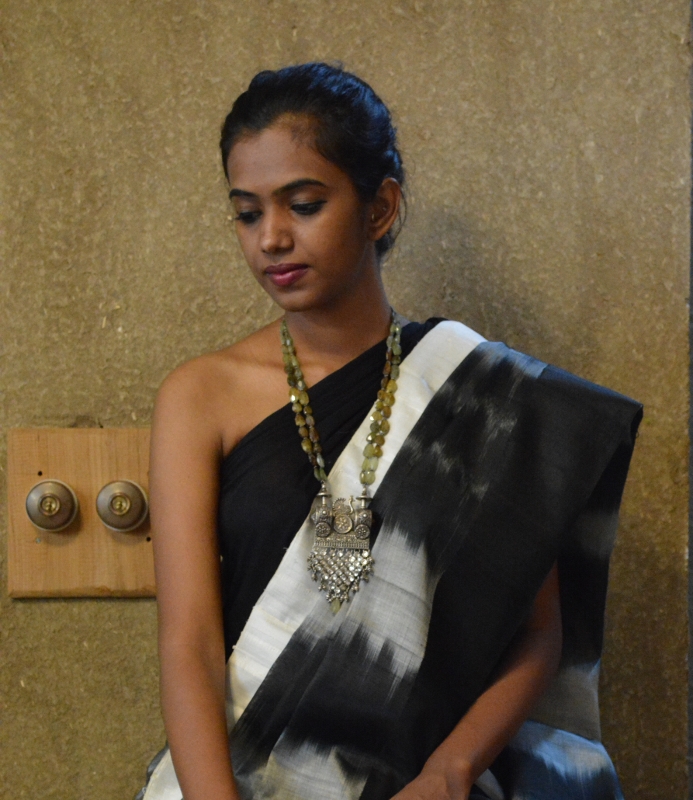
R.C Some of your designs combine ikat and kuttu techniques which has not been done before in the Gadwal tradition. How did you go about developing this combination with the weavers?
V.N The three shuttle technique allows me to use different fibres in the border and body. I always experiment in such a manner. I thought it would be great if I use this with Ikat. I have made such combined saris where the body is ikat in cotton silk or linen silk and the border pure silk, raw silk or linen silk. The final result is very unusual and so very satisfying for me.
Weavers always face new experiments with reluctance. I have to convince them and pay well for their efforts. This time it was completely different because they did not know ikat. I brought a weaver from Pochampally to Gadwal to teach them the ikat dying.
RC: What has the response been to your saris, and who buys them?
VN: The response has been good. I address a very small audience – the ladies who wants to express themselves, want to be themselves and are contemporary in their thinking.
RC: So Artisans’ gallery is a good place to sell the saris?
VN: Yes, when I exhibited here for the first time I met the kind of audience I was looking for. These were the connoisseurs of textile and design. Artisans’ stand for a certain standard and quality, so exhibiting here creates a good impression of the brand.
RC: Where do you hope to take Reshamwala in the future?
VN: I’ve not thought too much about this yet. But I’d like to experiment with different handloom weaving traditions of India and combine different traditions to get unusual designs. I’d like to see younger people wearing saris more often, and to see the Gadwal cotton sari and Solopur sari in their full glory.
The exhibition at Artisans’ runs from the 3rd to 5th March, 11 am to 7pm
Address: 52-56 V B Gandhi Marg, Kala Ghoda, Mumbai, India
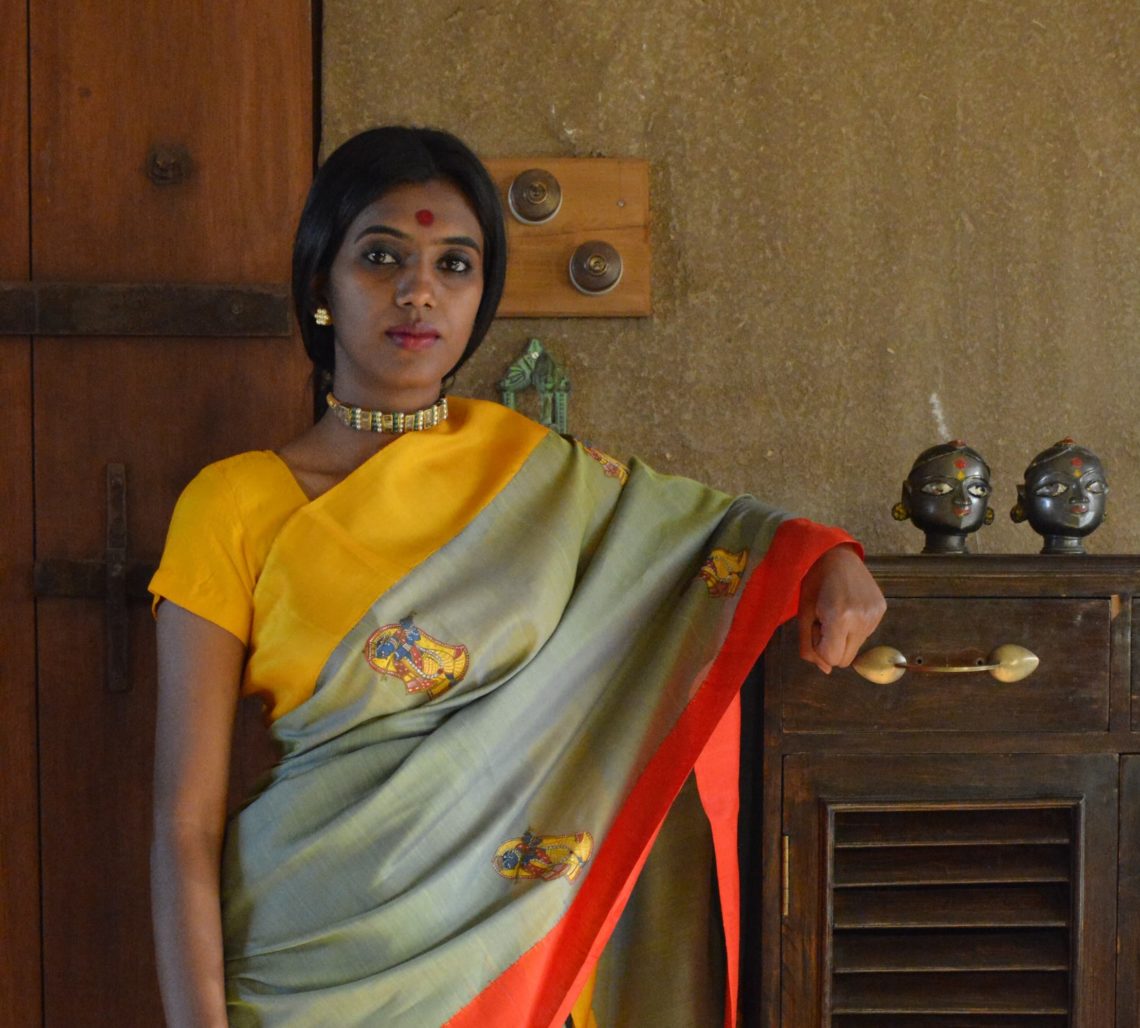
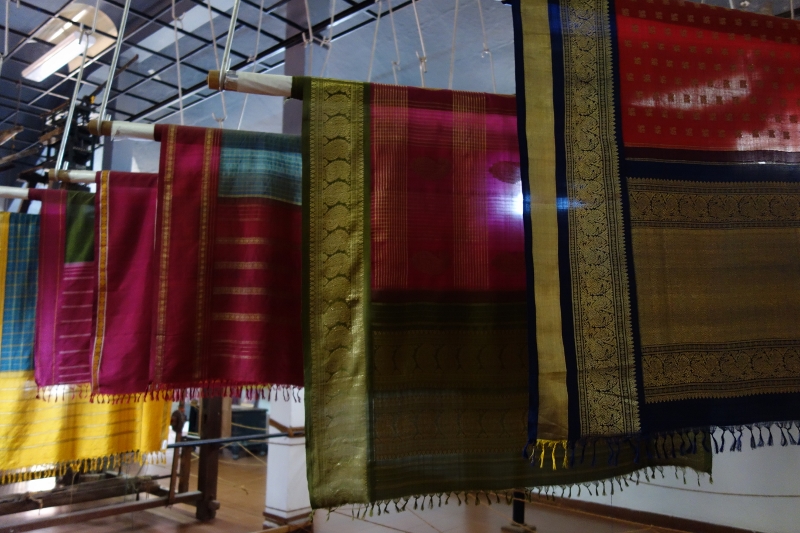
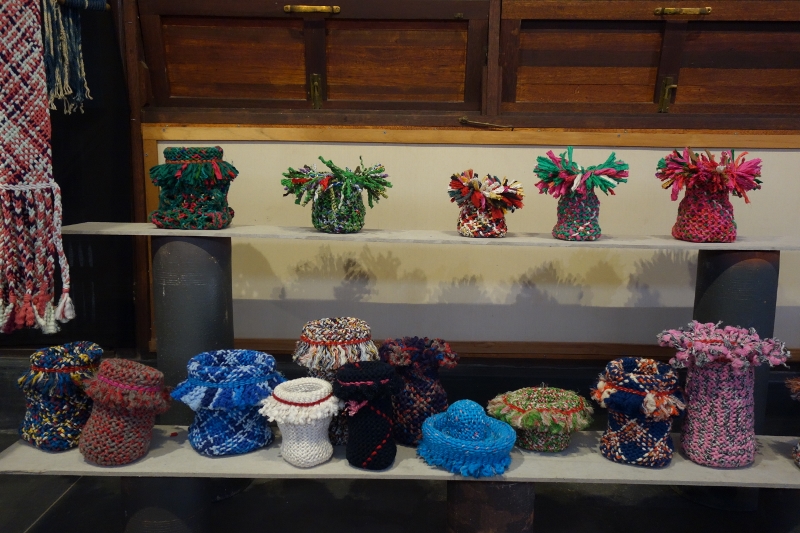
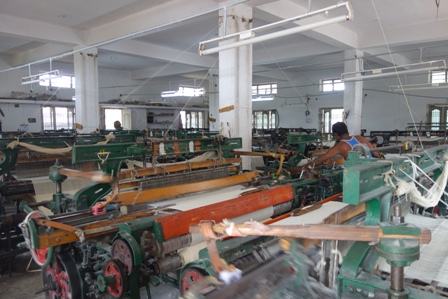

2 Comments
Prajna
I would like to purchase one of your Saree’s. How do I select and know the price.
Hi, you can contact Vinay directly on: shrutali.narkar@gmail.com. Facebook page: https://www.facebook.com/pg/reshamwala.vinay/about/?ref=page_internal